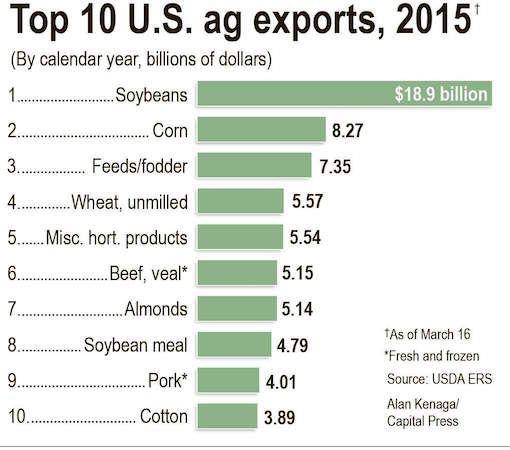forum
library
tutorial
contact

Global Wheat Stocks Tight, Prices Volatile
in Year of War, Drought
by Carol Ryan Dumas
Capital Press, December 20, 2022
|
the film forum library tutorial contact |

|
Global Wheat Stocks Tight, Prices Volatile
by Carol Ryan Dumas
|
 It's been a volatile year for the grain markets due to issues ranging from war to adverse weather. The result is a tight wheat supply.
It's been a volatile year for the grain markets due to issues ranging from war to adverse weather. The result is a tight wheat supply.
"Supply-chain uncertainty and unprecedented price and input volatility have been driven primarily by Russia and Ukraine, obviously big players in the global grain market," said Norm Ruhoff, a clinical assistant professor of agricultural economics and rural sociology at the University of Idaho.
Russia's invasion of Ukraine last February was a threat to global wheat supplies, sending wheat futures on the Chicago Mercantile Exchange to $14 a bushel, he said during the university's Idaho Ag Outlook seminar.
"We have since come down from that level," he said.
Looking at the overall price movement and the range in futures prices, 2007 was the former benchmark for volatility with a range of $7.60 a bushel between highs and lows. From 2013 through 2019, that range was $1.65.
A range of $8.17 was set in 2021, and 2022 is on course for setting an even bigger range, he said.
Russia and Ukraine account for 20% of global wheat production and one-third of global wheat exports, he said.
So there are "very big implications anytime you threaten wheat supplies coming out of the Black Sea," he said.
In addition, severe drought in Argentina will reduce production. Australia will have a record wheat crop, but heavy rains late in the season will hurt quality.
U.S. wheat production is expected to be down due to extremely dry conditions in the Midwest, he said.
"We're seeing the lowest global wheat production since 2017," he said.
That's helping reverse a seven-year uptrend in global wheat stocks, which are down 10% from the 2019 peak, he said.
The global wheat stocks-to-use ratio set a record low of 21% in 2017, meaning 21% of the wheat supply was utilized that year. A record high of 40% usage was set in 2019. That's projected at 34% in 2022, he said.
"So what I'm saying in terms of global wheat stock — tighter but certainly not the tightest," he said.
As for the U.S., 40% of U.S. wheat production comes from the hard red winter crop, and it was the lowest in over 30 years in 2022.
Soft white wheat, however, was up 4% from the five-year average coming out of a drought in 2021, he said.
"So white wheat production, particularly here in the Pacific Northwest, rebounded," he said.
Total U.S. wheat production in 2022 is down 7% from the five-year average and off 17% from the 10-year average, combined with the tightest stocks of U.S. wheat in 15 years, he said.
"Certainly, relative to global wheat supplies, U.S. wheat stocks are indeed tight," he said.
Looking ahead, the U.S. winter wheat crop remains vulnerable and is off to a rough start, he said.
"U.S. crop ratings are at the worst level in history, only 34% on a national scale rated as good to excellent," he said.
The issues are primarily in the Midwest, where Kansas is only showing 21% in good to excellent condition. But there are also issues in the Pacific Northwest, especially in Idaho with 37% in the good to excellent rating, he said.
"That's very rare for Idaho, we're usually up in the high 60s this time of year," he said.
Some people are of the opinion recent precipitation has lowered the severe drought impact, he said.
"Nonetheless, we need to keep our eye on winter wheat conditions moving forward," he said.
learn more on topics covered in the film
see the video
read the script
learn the songs
discussion forum
